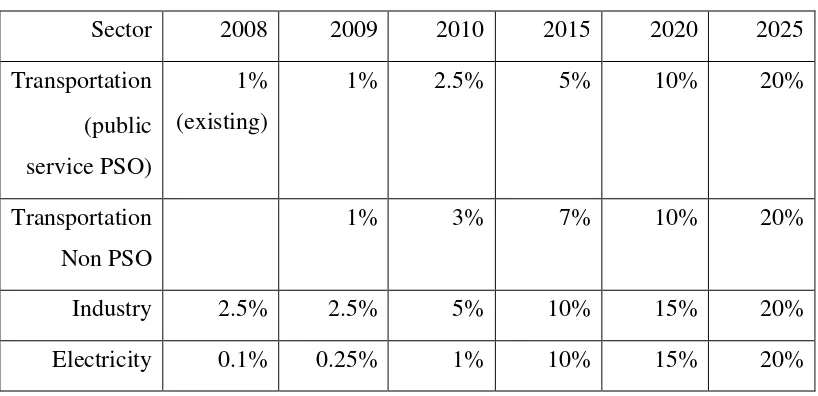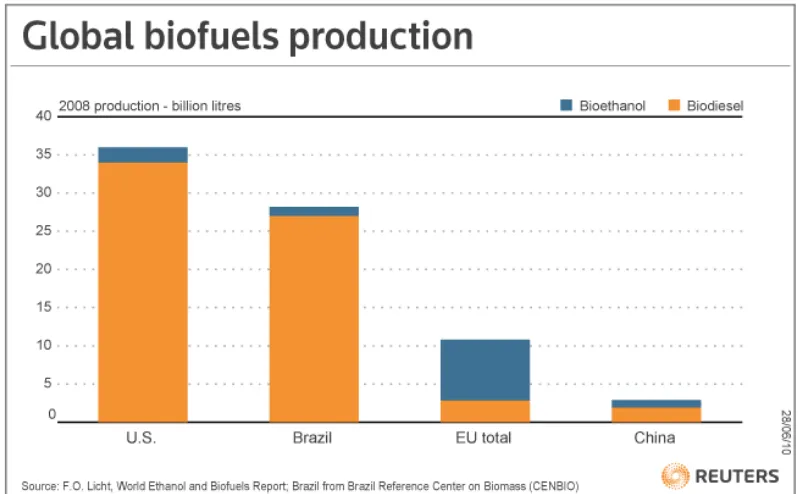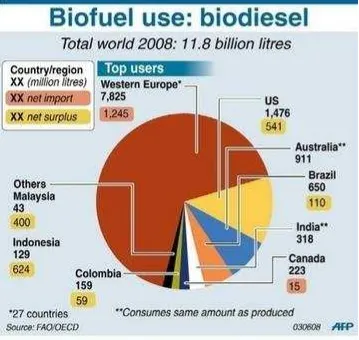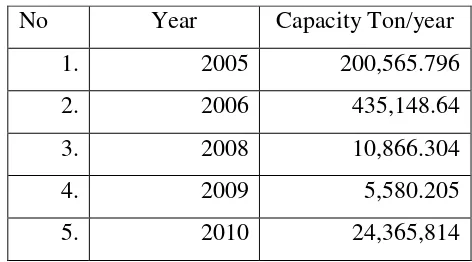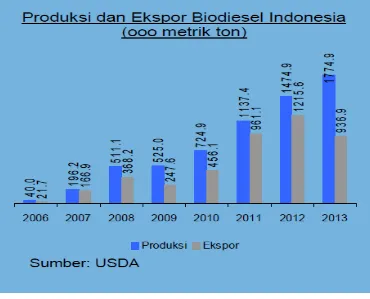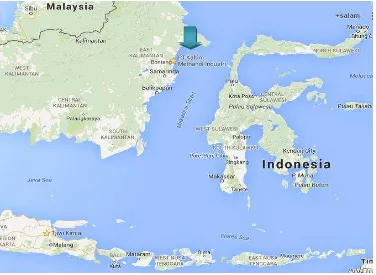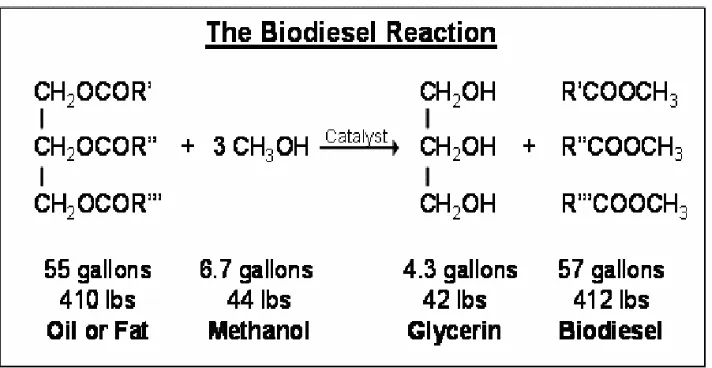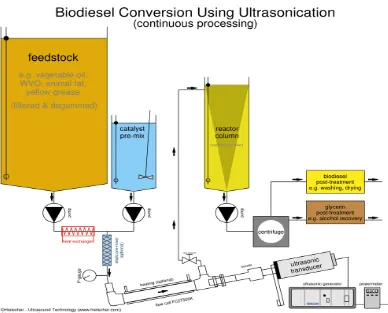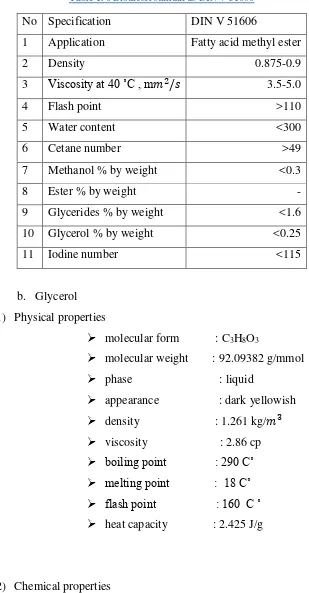1
CHAPTER I
INTRODUCTION
1.1Background
Waste vegetable oil is considered a second generation bio-fuel as it can’t be reused for food, in fact recycling it for fuel can also improve the overall environmental impact. Automative bio-diesel has been a very important issue to
attract the researchers, since it uses a renewable energy and considered as an
alternative energy for petrol oil; so we need the production of bio-diesel basically
for living (Wood and Parrott 2013) . Waste vegetable oil (WVO) was chosen in
this plant design because of the following reasons. First, it doesn’t threaten the food chain. Second, it is readily available. Third, easy to convert to bio-diesel.
Forth, it has low sulfur content. And in general, restaurants will usually dispose
the used cooking oil and replace it by a new one. At this point we might take the
advantage of using the used cooking oil to make bio-diesel in a more economical way, as we don’t need to pay much for waste vegetable oil and at the same time will decrease the environmental pollution by (WVO) disposal. However, the one disadvantage of WVO is that it can decrease engine life if it wasn’t properly refined.
The advantages of vegetable oils as diesel fuel are A. liquid
nature-portability, B. heat content (80% of diesel fuel), C. ready availability and D.
Renewability. The disadvantages are A. higher viscosity, B. lower volatility and
C. The reactivity of unsaturated hydrocarbon chains (Pryde 1983).
In the process of bio-diesel production will result (glycerin) byproduct
density of 10.5 per gallon as bio-diesel production will generate about 10% (w/w)
glycerol as the main byproduct , to simplify it , every gallon of bio-diesel
produced generates around 1.05 pounds of glycerol, for example a plant that
2
glycerin, glycerin is considered a very basic material for any factory that produces
cosmetics as it is a high moisture for the skin (Pachauri 2006).
Catalyst is a substance that functions to speed up the reaction rate under
a specific temperature degree without being involved in the reaction, in bio-diesel
production of these papers will use sodium methoxide (NaOH) catalyst, which
functions in the reaction process to speed up the reaction rate, it reacts with
triglycerides and break them apart so that the methanol can bond with the fatty
acid and make bio-diesel. NaOH tends to be hard to dissolve in methanol and will
need more time compared to other basic catalysts as KOH for an instant, KOH
will dissolve faster and that is the reason why KOH is mostly used instead of
NaOH. However, KOH is considered more expensive than NaOH which is around
$2.50/lb for KOH and $1.27/lb for NaOH. In addition, the Amount of KOH
catalyst to make bio-diesel is considered more than the amount of NaOH catalyst,
and according to these reasons NaOH catalyst was chosen for these research
papers (Hossain and Mazen 2010).
The basic purpose of this plant design is to design a bio-diesel plant
which uses Ultrasonic agitation in reactor and to determine economic feasibility
for plant establishment.
The Designed Production Capacity
The term production capacity can be defined as the maximum amount of
production done within a particular unit of time; a manufacturer should have an
optimal production capacity in which the quantity and the type of the product
manufactured should have a maximum profit with minimal costs.
a. Biodiesel need in Indonesia
In contrast with the stagnant condition of Indonesian FE, Indonesia’s biodiesel sector maintained healthy growth in 2013. Biodiesel production
increased from 2.2 billion liters in 2012 to 2.45 billion liters in 2013. Growth is
3
continue driving Indonesian biodiesel production through 2014 and 2015, despite
unfavorable biodiesel markets overseas. Indonesian biodiesel production is
expected to reach 3.65 billion liters in 2014, and it will further increase to 4.15
billion liters in 2015.
Table 1. 1 Comparative view of minimum biodiesel mandatory program in Indonesia, 2008 – 2025 (Slette 2013)
of Energy and Mineral Resources (MEMR) expects Indonesia will face biodiesel
supply shortages starting in 2016. MEMR is therefore encouraging industry to
expand production capacity from the current level of 5.67 billion liters per year.
Business-as-usual biodiesel supply expansion growth, according to MEMR
calculation, will result in the situation of annual excess demand for biodiesel at 2
billion liters within 2016 – 2020 timeframe.
b. The need for biodiesel overseas
The expansion of bio-fuels worldwide has been primarily state-driven.
Mandatory bio-fuel-blending policies and economic incentives (such as tax breaks
and direct subsidies) have not only incentivized production and reduced its costs
but also created great market demand for these fuels. Leading roles can be
4
supportive policies internationally. The US and Brazil together account for about
three-quarters of all bio-fuel production in the world and recently have been
expanding not only their own production but also engaging with other countries
through research and development trade agreements, and pro-bio-fuel partnerships
(Peters 2011).
5
Figure 1. 2 World consumption of biodiesel ( (World Ethanol and biomass Report 2008))
As we can see in Figure 1.1 and 1.2 above, 27 Western Europe countries are the
top users of the world biodiesel followed by the USA, some countries as Australia
and India consumes the same amount of their produced biodiesel (Global energy
network institue GENI 2010).
Indonesia isn’t a high fuel producer and that’s why we consider this plant design.
c. Availability of Raw Materials
Since Indonesia has significant land area in different forest types that
could be used to produce bio-fuels, the potential to collect and convert forest
materials to methanol for use in energy production is pretty high. Using the
bio-6
methanol could be produced for use as a transportation fuel and/or to supply fuel
cells to produce electricity.
By generating electricity using bio-methanol/fuel cells instead of from fossil
fuels, from 9 to 38% of the total carbon currently emitted each year in Indonesia
could be avoided. In contrast, substituting this same amount of bio-methanol for
gasoline could provide all of the annual gasoline needs of Indonesia and
contribute towards reducing their carbon emissions by about 8–35%. So we might conclude that Indonesia is a very qualified place to make Biodiesel because it won’t face problems to provide methanol raw material from its forests for the biodiesel production process. As for the catalysts KOH or NaOH can be obtained
with a price of US $900-1100 / Metric Ton (FOB Price)90% purity.
d. Minimum/Maximum design capacity
Table 1. 2 Data import of biodiesel in Indonesia (Biodiesel Import in Indonesia 2005)
No Year Capacity Ton/year
1. 2005 200,565.796
2. 2006 435,148.64
3. 2008 10,866.304
4. 2009 5,580.205
5. 2010 24,365,814
7
Figure 1. 3 Production and export of biodiesek in Indonesia from 2006-2013( (USDA Production and Export in Indonesia 2006-2013))
As observed in figure 1.3 above, Indonesia production of biodiesel from
2006 until 2013 is more than it exports, or in another way, Indonesia exports most
of its biodiesel production.
Table 1. 3 Capacity data of biodiesel in Indonesia( (Indobiofuel 2006-2013))
No Plant name Capacity
1. BBKK Departemen Perindustrian, Jakarta 300 liter/day
2. Pondok Pesantren Uswatun Hasanah Kayeli,
Pulau Buru, Ambon
300 liter/day
3. PLN Mataram, NTB 1 ton/day
4. POLITEKNIK Lampung 300 liter/day
5. PT.PN IV Tebing Tinggi,Sumut 5 ton/day
6. Penda Riau, Pekanbaru 8 ton/day
8
The chosen capacity for this plant is 15.000 ton/year, this capacity might be
changed in future, and that depends on the consumption of products. If the consumption of biodiesel increased then it’s possible to use the expansion area and increase the capacity.
1.2Site Selection for the Plant
It has been decided that the plant will be based in Bontang/East Kalimantan.
With the following considerations:
1. Sources of the Raw Materials
The Plant of Biodiesel belongs to the process of cost reduction and thus the plant
should be built near the sources of raw materials. The main raw materials include
methanol from PT. Kaltim methanol industry in bontang and KOH/NaOH
(catalysts) from PT. Tjiwi Kimia in Surabaya.
9
2. Location (with respect to the marketing area): A site should be selected so
that it is close to at least two major forms of transport: road, rail, waterway or
a seaport. Road transport is being increasingly used, and is suitable for local
distribution from a central warehouse.
3. Transportation: the plant is located in Bontang. To supply the raw materials,
it can be carried out using land transportation which is by Jl.
Samarinda-Bontang for the transportation of methanol from PT.Kaltim methanol to
Bontang, where KOH/NaOH can be transported from Semarang using
airplane to Banjar masin, from there to Bontang via Jl. Ahmad Yani.
4. Water Facilities: Bontang is one of the industrial areas in Indonesia that its
main utility supply is water; the availability of water is not a problem since it
is located near Java Sea.
5. Labor Force: The labor force of the plant is required to be from Bontang
population and its surrounding areas, in which the population in this area is
high, making it a potential source of labor force.
6. Society: In relation to the social conditions, society here has already been
familiar with the industrial environment so that establishment of a new plant
is not the matter and the society can adapt easily and quickly.
7. Waste Disposal: Biodiesel production process will result biodiesel and
glycerol by product, the washing water could be retreated and reused.
8. Energy: energy supply is another thing which needs considering in the
selection of the manufacturer location. To meet the electricity need, the
supply is taken from PLN Bontang, East Kalimantan and Three Cummins
Power Generation 823DFJD generator sets powered by KTA38G5 engines,
each set prime rated at 823 kW/1029 kVA, and one 1005DFLC genset,
powered by a KTA50G3 engine, the set prime rated at 1005 kW/1256 kVA,
together with paralleling switchgear (PLN Bontang, East Kalimantan 2004).
9. Taxes: The taxes to be paid may be lower and easier as Bontang is an
10
10. Costs of Construction: a 500-hectare plot of land will cost around 8-9 million
US dollar in Bontang, it makes sense as the area is qualified for industrial
manufacturer.
1.3Literature review
1.3.1 Transesterification
Esterification reaction is mostly used for reducing the FFA level of oil
followed by transesterification reaction for converting fatty acid into fatty acid
methyl esters. Some people are following esterification process for producing
fatty acid methyl esters but the majority will use transesterification process
(Hossain and Mazen 2010).
Transesterification of soybean oil, free of synthetic antioxidants, was
performed in analytical grade absolute methanol with sodium methoxide
(SIGMA-ALDRICH, 95%) as the catalyst at a concentration of 0.8 g 50 mL−1 of methanol. The reaction was heated under reflux at 60 °C and agitated slowly. The
biodiesel was separated from glycerol by decantation in a separating funnel.
Transesterification is the most common way to produce biodiesel. It is a
catalyzed chemical reaction involving vegetable oil and an alcohol to yield fatty
acid alkyl esters (i.e., biodiesel) and glycerol, as shown in (Fig. 1.5) bellow:
11
This reaction is exothermic, which means it produces heat. Reaction is carried out at a temperature of (50-60)C° (120°F) is optimum temperature) (Wood and Parrott 2013).
1.3.2 Ultrasonic processor
Normally, the reaction time of biodiesel production from homogeneous
transesterification is around 30 min to 1 h depending on reaction temperature,
FFA in oil, and amount of catalyst (A.K Tiwari 2007). To shorten the reaction
time, ultrasonic wave is one technique providing excellent mixing between the
two phases. It will break down the liquid and form the cavitations bubbles
resulting in the rising of mass transfer rate and acoustic streaming mixing (Mason
1999).
The ultrasonic transducer uses cavitations or Nano-sized vacuum bubbles that
locally produce high temperatures and extreme pressures when the cavity
implodes on itself. This creates jets of liquid that help to overcome the cohesion
and adhesion of the WVO and sodium methoxide. This aids in the
transesterification and allows for a better and more thorough reaction.
1.3.3 Biodiesel Processor
Fig.1.6. illustrates the automated biodiesel processor as before the actual
reaction begins, it is important to preheat the WVO to reduce the viscosity and
evaporate any water existing in the oil from cooking. The next step is to pre-filter
the WVO in order to remove any food particles remaining in the oil so that the oil
is clean and ready for the chemical reactions. To achieve this step, the WVO was
poured through a series of progressively finer filtering screens. The finest filtering
screen should be around 50 to 75 microns. After the pre-filtering stage, the oil is
12
Figure 1. 6 Illustration of biodiesel processor, reactor and Ultrasonic transducer (continuous process)(Hielscher-Ultrasound Technology 2007)
A continuous plant leads to better heat economization, better product purity
from phase separation by removing only the portion of the layer furthest from the
interface, better recovery of excess methanol in order to save on methanol cost
and regulatory issues.
Biodiesel has several advantages such as: 1) being biodegradable, 2) being
non-toxic, 3) having low emissions of carbon monoxide, 4) having a relatively
high flash point (150° C), which makes it less volatile and safer to transport
handle than petro-diesel, and 5) it has a good lubricating properties that can
reduce engine wear and extend engine life.
The main factors affecting the yield of the resulting ester transesterification
reaction are:
1. Molar ratio of WVO/methanol: Different oil to methanol molar ratios like 1:1
13
carried out using 0.5% sodium hydroxide for 2 hours at room temperature. Figure
1.7 showed the yield of biodiesel from waste soybean oil byusing different types
of molar ratio of oil to methanol. The results showed that increasing of methanol
to oil molar ratio increased the yield of biodiesel production. Oil to methanol
molar ratio of 1:1 gave the higher yield (71.2%) of biodiesel than 3:1 oil to
methanol molar ratio.
2.Catalyst concentration: Biodiesel production can be affected by the amount of
catalyst used in the reactions. In a research experiment, different concentrations of
NaOH like 0.5, 1.0 and 1.5% were used. The reactions were carried out by using
methanol with 1:1 oil to alcohol molar ratio for 2 h of reaction time at room
temperature. Figure 1.8 shows biodiesel yield using different concentrations of
NaOH as a catalyst. From the results, the optimum yield of biodiesel can be
obtained at 1.0% of NaOH concentration. It reached 72.7% of the biodiesel yield.
3. Temperature of reaction: In research experiment temperature was varied
between 25 and 65 °C. For the same final reaction time, the percentage of esters
increased with temperature. After 5 min, the esters present in the 65, 45, and 25
°C runs were 84.7, 61.6, and 49.3%, respectively, showing the influence of
temperature on ester conversion. At 120 min, the percentages were 94.2, 79.9, and
69.8, respectively (Jose´ M. Encinar 2005)
4. Mixing method: Most researchers believe that the effect of Ultrasonic agitation
on enhancing transesterification lies mainly in intensifying the mixing of the
immiscible methanol and triglyceride phases, especially at the beginning of the
reaction. The mixing enhancement is largely due to the collapse of ultrasonic
cavitations bubbles and the reduced droplet sizes of low boiling temperature
methanol in less-miscible triglycerides (Wu P 2007)
5. Water content and free fatty acids in WVO:
Waste vegetables oil contains water from food due to the frying process
14
different vegetable oil will lead to a different FFA composition, acid value, and
different kinematic viscosity as seen in Table 1.4 and Table 1.5.
Table 1. 4 Fatty acid composition (wt %) in WVO and CVO
Property Waste veg.oil Waste canola oil
Myristic(C14:0) 0.9 0.1
Table 1. 5 Comparison between the properties of WVO and WCO
Property Waste veg.oil Waste canola oil
Acid value(mg KOH/g) 2.1 <0.5
Kimematic viscosity at 40˚C (cSt) 35.3 30.2
The process variables that influence the transesterification of triglycerides,
which are catalyst concentration, molar ratio of methanol to raw oil, and kind of
catalyst are all affecting products yield. This paper also studies the influence of
the Ultrasonic bath on the physical and chemical properties of the feedstock oils
15
transesterification reaction conditions that produce the maximum ester content
16
1.5Physical and chemical properties of raw materials and products
1.5.1 Raw materials
temperatures in the presence of air and moisture. Three essential degradation
reactions occurs under these conditions are: Hydrolysis causing from the moisture
content of fried food. This reaction produces free fatty acids (FFA), mono- and
di-glycerides.
Oxidation: causing from the contact with oxygen. Reaction
products are oxidized monomeric, dimeric and oligomeric
triglycerides and volatile materials such as aldehydes and ketones.
Polymerization: causing from these two reactions, and high
temperatures. This reaction produces dimeric and polymeric
triglycerides with ring structure.
Because of these degradation reactions mentioned above, a number of
17
density, FFA content, total polar material (TPM), polymerized triglycerides, and
decrease in smoke point, the number of double bonds, etc. If the frying process is
continued, these materials will undergo further degradation and finally the oil will
not be appropriate for frying (C 2000).
b. Methanol
Chemical reaction of methanol which evaporates in
the air producing carbon dioxide and water
2CH3OH + 3O2 2CO2 + 4H2O....(1.1) Methanol esterification : methanol reacts with
organic acid(formic acid) to form ester
CH3OH + HCOOH HCOOCH3 + H2O....(1.2) Methanol reacts with Sodium at room temperature
and releases hydrogen gas
18
In the dominant ICI (now Synetix) process, the syngas mixture of H2, CO, and
CO2 is reacted over a copper-zinc-based catalyst at high pressure (50–100 atm)
and moderate temperature (200–3000C):
CO + 2H2 CH3OH ...(1.4) ΔH) 298K = −90.88 kJ/mol
CO2 + 3H2 CH3OH ...(1.5) ΔH) 298K = −41.09 kJ/mol
CO2 + H2 CO + H2O ...(1.6) ΔH298K = 49.87 kJ/mol
The modern methanol plants have selectivity to methanol of 99%, with energy
efficiencies that reach 70% .
1.5.2 Supporting materials
Sodium hydroxide
1) Physical properties
molecular form : NaOH
molecular weight : 39.9971 g/gmol
phase : solid
appearance : white flakes
purity : 98%
boiling point 1 atm : 1388 C˚
solubility(water 20 C˚) : 1110 g/L
solubility( methanol 20 C˚) : 139 g/L
(PT.Tjiwi Kimia)
2) Chemical properties
NaOH reacts with strong acids to produce salt and water
19
1.5.3 Product / byproduct
a. Methyl ester (biodiesel)
molecular form : R_COOCH3
molecular weight : 283.77 g/mmol
phase : liquid
appearance : clear yellowish
density : 810 kg/
viscosity : 7.3 cp
specific gravity : 0.87-0.89
cetane number : 46-70
cloud point : (-11 s/d 16) C˚
boiling point : (182-338) C˚
pour point : (-15 s/d 135) C ˚
critical temperature : 239 C˚ =(463 F˚)
heat capacity : 662.4529 J/kg.K
(German DIN V 51 606).
20
Table 1. 6 Biodiesel standards DIN V 51606
No Specification DIN V 51606
1 Application Fatty acid methyl ester
21
Glycerol reacts with nitric acid to produce propanetriol
nitrat and water:
C3H8O3 + HNO4 C3H7NO5 + H2O...(1.8)
1.6General process overview
The chosen process in this plant design of biodiesel is transesterification
using waste vegetable oil and methanol, because this process takes place at
atmospheric pressure and temperature lower than esterification process, in
addition, the raw material used is WVO so transesterification process is more
appropriate to give a higher yield, as WVO contain a higher FFA value.
Conversion of biodiesel is up to 95%.
